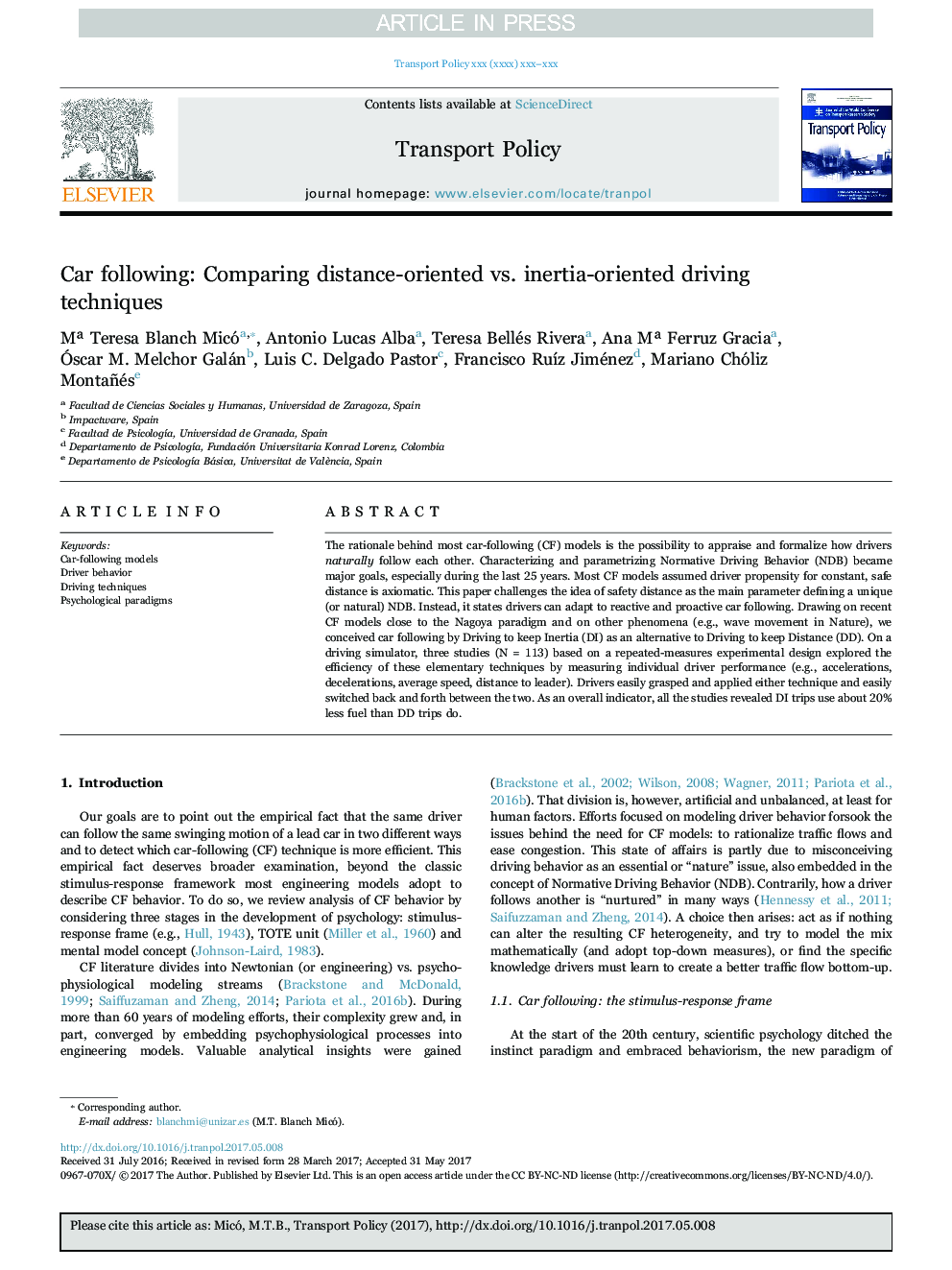| Article ID | Journal | Published Year | Pages | File Type |
|---|---|---|---|---|
| 7496970 | Transport Policy | 2018 | 10 Pages |
Abstract
The rationale behind most car-following (CF) models is the possibility to appraise and formalize how drivers naturally follow each other. Characterizing and parametrizing Normative Driving Behavior (NDB) became major goals, especially during the last 25 years. Most CF models assumed driver propensity for constant, safe distance is axiomatic. This paper challenges the idea of safety distance as the main parameter defining a unique (or natural) NDB. Instead, it states drivers can adapt to reactive and proactive car following. Drawing on recent CF models close to the Nagoya paradigm and on other phenomena (e.g., wave movement in Nature), we conceived car following by Driving to keep Inertia (DI) as an alternative to Driving to keep Distance (DD). On a driving simulator, three studies (N = 113) based on a repeated-measures experimental design explored the efficiency of these elementary techniques by measuring individual driver performance (e.g., accelerations, decelerations, average speed, distance to leader). Drivers easily grasped and applied either technique and easily switched back and forth between the two. As an overall indicator, all the studies revealed DI trips use about 20% less fuel than DD trips do.
Keywords
Related Topics
Social Sciences and Humanities
Social Sciences
Geography, Planning and Development
Authors
Mª Teresa Blanch Micó, Antonio Lucas Alba, Teresa Bellés Rivera, Ana Mª Ferruz Gracia, Ãscar M. Melchor Galán, Luis C. Delgado Pastor, Francisco RuÃz Jiménez, Mariano Chóliz Montañés,
